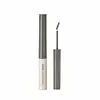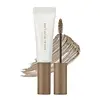What's inside
What's inside
 Key Ingredients
Key Ingredients

 Concerns
Concerns

 Ingredients Side-by-side
Ingredients Side-by-side

Isododecane
EmollientTalc
AbrasiveTrimethylsiloxysilicate
EmollientSynthetic Wax
AbrasiveTitanium Dioxide
Cosmetic ColorantCI 77499
Cosmetic ColorantDisteardimonium Hectorite
StabilisingCI 77492
Cosmetic ColorantHydrogenated Polyisobutene
EmollientCI 77491
Cosmetic ColorantPropylene Carbonate
SolventDextrin Palmitate/Ethylhexanoate
EmulsifyingPolypropylsilsesquioxane
Aluminum Myristate
Emulsion StabilisingTriethoxycaprylylsilane
Aluminum Hydroxide
EmollientEthylhexylglycerin
Skin ConditioningWater
Skin ConditioningIsododecane, Talc, Trimethylsiloxysilicate, Synthetic Wax, Titanium Dioxide, CI 77499, Disteardimonium Hectorite, CI 77492, Hydrogenated Polyisobutene, CI 77491, Propylene Carbonate, Dextrin Palmitate/Ethylhexanoate, Polypropylsilsesquioxane, Aluminum Myristate, Triethoxycaprylylsilane, Aluminum Hydroxide, Ethylhexylglycerin, Water
Isododecane
EmollientTrimethylsiloxysilicate
EmollientCeresin
Emulsion StabilisingTitanium Dioxide
Cosmetic ColorantTalc
AbrasiveDisteardimonium Hectorite
StabilisingMicrocrystalline Wax
Emulsion StabilisingDextrin Palmitate
EmulsifyingCI 77492
Cosmetic ColorantPropylene Carbonate
SolventPolypropylsilsesquioxane
CI 77499
Cosmetic ColorantDextrin Palmitate/Ethylhexanoate
EmulsifyingPolyisobutene
PEG-20 Glyceryl Stearate
EmulsifyingCI 77491
Cosmetic ColorantPolymethylsilsesquioxane
Triethoxycaprylylsilane
Glyceryl Caprylate
EmollientSilica
AbrasiveIsododecane, Trimethylsiloxysilicate, Ceresin, Titanium Dioxide, Talc, Disteardimonium Hectorite, Microcrystalline Wax, Dextrin Palmitate, CI 77492, Propylene Carbonate, Polypropylsilsesquioxane, CI 77499, Dextrin Palmitate/Ethylhexanoate, Polyisobutene, PEG-20 Glyceryl Stearate, CI 77491, Polymethylsilsesquioxane, Triethoxycaprylylsilane, Glyceryl Caprylate, Silica
Ingredients Explained
These ingredients are found in both products.
Ingredients higher up in an ingredient list are typically present in a larger amount.
Ci 77491 is also hydrated iron III oxide. It's sole purpose is to give a red/pink hue to products.
Iron III oxides are classified as inorganic chemicals for coloring.
Synthetically created Ci 77491 is considered safer than those naturally found. This is because the synthetically created version may contain less impurities. Iron oxides are generally non-toxic and non-allergenic.
Learn more about CI 77491Ci 77492 is also hydrated iron III oxide. It's sole purpose is to give a yellow hue to products.
Iron III oxides are classified as inorganic chemicals for coloring.
Synthetically created Ci 77492 is considered safer than those naturally found. This is because the synthetically created version may contain less impurities. Iron oxides are generally non-toxic and non-allergenic.
Learn more about CI 77492Ci 77499 is also hydrated iron III oxide. It is created from mixing red and black iron oxides. This helps give shades of darkness to a product.
Iron III oxides are classified as inorganic chemicals for coloring.
This ingredient is an emulsifier. It helps enhance the texture and stability of formulas.
The only manufacturer of this ingredient is in Japan. According to them, this ingredient reduces the tackiness and greasiness of products.
Dextrin Palmitate/Ethylhexanoate is created by reacting dextrin with a mixture of palmitoyl chloride and hexyldecanoic acid chloride.
Learn more about Dextrin Palmitate/EthylhexanoateDisteardimonium Hectorite comes from the clay mineral named hectorite. It is used to add thickness to a product.
It can also help stabilize a product by helping to disperse other ingredients.
Hectorite is a rare, white clay mineral.
Learn more about Disteardimonium HectoriteIsododecane is a fragrance, emollient, and solvent.
As an emollient, it helps your skin stay soft and hydrated. Emollients help trap moisture into your skin.
Isododecane's role as a solvent makes it a great texture enhancer. It spreads smoothly on skin and does not leave a sticky feeling behind. Isododecane also helps prevent color transfer in makeup products.
Isododecane is not absorbed into skin.
Learn more about IsododecanePolypropylsilsesquioxane is a synthetic silicone resin used to create a flexible, water-resistant layer on the skin or hair.
This helps improve the wear and transfer resistance in products like foundations, sunscreens, and colored makeup without feeling greasy.
This ingredient is a solvent. It helps dissolve active ingredients and alter the texture of products.
Propylene Carbonate is commonly used in makeup and with clay, such as montmorillonite or bentonite.
Studies show this ingredient to be safe for cosmetics. When it is undiluted, it can cause skin irritation. (It is always diluted in skincare and makeup). This ingredient is water-soluble.
Propylene Carbonate is created from propylene glycol and carbonic acid.
Learn more about Propylene CarbonateTalc is a clay mineral. It helps absorb moisture and improve the texture of products. Like other types of clay, Talc can have a slight exfoliating effect on skin. Talc can be added to increase the volume of products.
Some Baby powders are made by combining talc with corn starch. The word "talc" comes from Latin and originates from Arabic. Talc is a mineral commonly found throughout the world.
If you have any concerns about using talc, we recommend checking out the FDA's official page.
Learn more about TalcTitanium dioxide is a mineral UV filter widely used in sunscreens and cosmetics.
It is one of only two UV filters officially classified as “mineral” by regulatory agencies, the other being zinc oxide.
Titanium dioxide provides broad-spectrum protection mostly in the UVB and UVAII range, with some protection in the UVAI range.
While its UVA protection isn’t as strong as zinc oxide’s, the difference is minor.
A common myth is that mineral UV filters reflect UV light. However, modern research shows titanium dioxide absorbs UV radiation like chemical filters (~95% absorption & 5% reflection).
Thanks to its non-irritating nature, titanium dioxide is suitable for sensitive, acne-prone, or redness-prone skin. It is unlikely to cause "eye sting" like other sunscreen ingredients.
A major drawback of this ingredient is its white cast and thick texture. This is why mineral sunscreens often leave a white cast and are less cosmetically elegant than chemical/hybrid sunscreens.
To improve white cast and spreadability, micronized or nano-sized titanium dioxide is often used.
There are ongoing concerns surrounding nano-titanium oxide's impact on marine ecosystems.
There is no conclusive evidence that any form of titanium oxide (or any other sunscreen ingredients) will cause harm to marine ecosystems or coral reefs. The science is still developing but many consumers are keeping a close eye on this issue.
Please note, many destinations have reef-safety sunscreen rules. For instance, the U.S. Virgin Islands advises all visitors to use non-nano mineral sunscreens.
Nano mineral sunscreens once raised safety concerns about absorption into skin.
Extensive research has shown that they do not penetrate healthy or damaged skin; they remain safely on the surface and the top layer of dead skin (stratum corneum).
You'll likely find titanium dioxide bundled with alumina, silica, or dimethicone. These ingredients help make titanium dioxide highly photostable; this prevents it from interacting with other formula components under UV light.
Learn more about Titanium DioxideTriethoxycaprylylsilane is a silicone used to bind and stabilize ingredients.
As an emulsifier, it helps prevent ingredients from separating. This can help elongate the shelf life of products.
Triethoxycaprylylsilane is often used to coat mineral sunscreens ingredients to help give a better feel. It also helps reduce oxidative stress in sunscreens.
Learn more about TriethoxycaprylylsilaneThis silicone is an emollient. Emollients create a thin film on the skin to prevent moisture from escaping.
It is not soluble in water and helps increase water-resistance in products.
According to a manufacturer, it can blend seamlessly with silicone oils, such as Cyclopentasiloxane.
Learn more about Trimethylsiloxysilicate